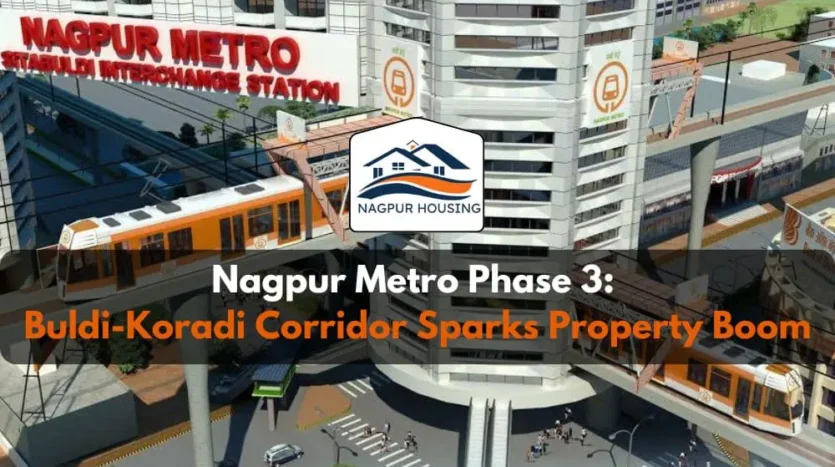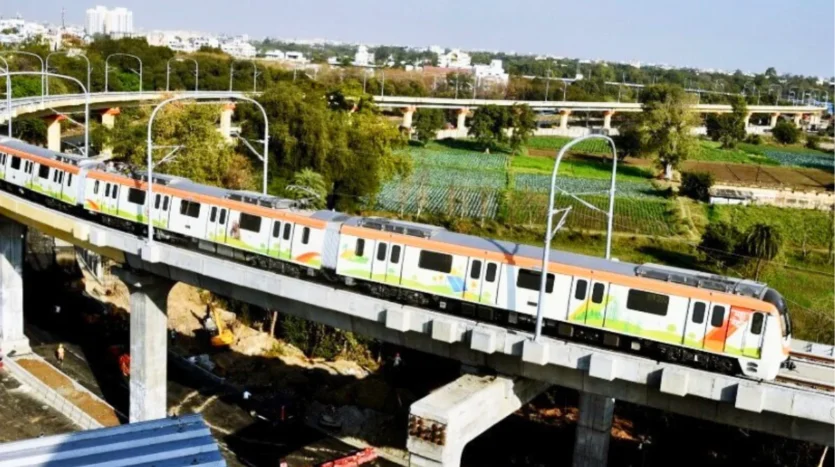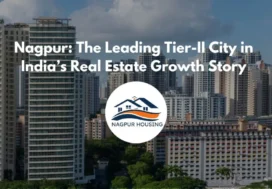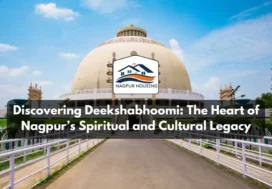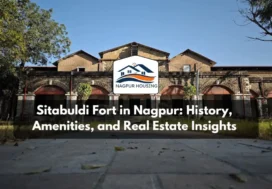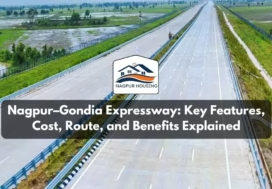Nagpur Metro Phase 3: Buldi-Koradi Corridor Sparks Property Boom
Nagpur, one of India’s fastest-growing tier-2 cities, is once again making headlines. This time, the buzz isn’t about oranges, IT parks, or even MIHAN. Instead, it’s the proposed Sitabuldi to Koradi Metro corridor under Nagpur Metro Phase 3 that’s stealing the spotlight. What’s surprising is that the project hasn’t even gone past the proposal stage. Yet, the anticipation is palpable, particularly in the real estate sector.
With no Detailed Project Report (DPR) ready, but a clear intent and early framework announced, stakeholders from developers and investors to local residents and urban planners are already analyzing the potential ripple effects. Could this be the next big leap in Nagpur’s urban transformation?
In this blog post, we take a deep dive into everything surrounding the Buldi-Koradi Metro plan — the alignment, projected growth, cost implications, and most importantly, the real estate excitement it has triggered.
You might like:
- नागपुर मेट्रो गाइड: ईस्ट-वेस्ट कॉरिडोर के सभी स्टेशन और सुविधाएँ
- नागपुर मेट्रो गाइड: नॉर्थ-साउथ कॉरिडोर के सभी स्टेशन और सुविधाएँ
📊 Project Overview: What We Know So Far
The proposed Sitabuldi-Koradi line spans 11.5 kilometers and is one of the four major corridors planned under the Comprehensive Mobility Plan (CMP) prepared jointly by MahaMetro and RITES.
Key preliminary details:
- The corridor is a part of Metro Phase 3.
- It’s designed as a Mass Rapid Transit System (MRTS).
- Expected cost: ₹300 crore per km.
- Total budget estimation: Around ₹3,500 crore.
- Likely number of stations: 10 (one every 1-1.5 km).
- Route: Starts from Kasturchand Park and extends to Koradi, covering major northern zones of the city.
While the DPR is still in the consultation phase, the MahaMetro authorities have opened a 15-day window for citizens and urban planning stakeholders to submit suggestions.
🏧 Route Alignment: Underground, Elevated or At-Grade?
One of the biggest discussion points in urban forums and real estate circles is the construction alignment of the proposed corridor. The alignment not only impacts the aesthetics and urban mobility but also determines the property values around it.
A senior Metro official clarified:
- Underground metro: Only where absolutely necessary due to significantly higher costs and complexity.
- First 3km, starting from Kasturchand Park, may require an underground format owing to pre-existing flyovers and dense city infrastructure.
- Beyond this, the corridor will transition to at-grade and then to an elevated format.
This mix of formats is a smart move. It allows cost control while minimizing disruption to existing infrastructure. However, each format comes with a different real estate implication:
- Underground sections are generally more property-friendly.
- Elevated sections can sometimes reduce the appeal of nearby residential zones due to noise or visual barriers.
🚋 Stations = Hotspots: What It Means for Localities
With one station planned every 1 to 1.5 km, around 10 stations are expected on the 11.5 km stretch. The exact station locations are yet to be finalized and will be based on population density, accessibility, and land availability.
Why does this matter to real estate?
In simple terms: Where there’s a Metro station, there’s growth.
Metro stations increase convenience and accessibility, which in turn pushes up demand. Areas such as Sadar, Gaddigodam, Kadbi Chowk, Chhaoni, Seminary Hills, Vayusena Nagar, Koradi Road, and Koradi itself are already seeing rising inquiries.
If a station is confirmed in these areas, expect:
- ⬆️ Property price escalation (both rental and purchase)
- 🏢 More commercial activity (cafes, coworking, local businesses)
- 🚪 Transit-Oriented Development (TOD)
🌎 The TOD Effect: Why Developers Are Excited
The term Transit-Oriented Development (TOD) is more than a buzzword. It refers to an urban planning strategy where high-density housing, office spaces, and retail areas are built around public transit hubs.
Metro corridors act as TOD magnets. Developers across Nagpur are already:
- Scouting land parcels near the proposed route
- Planning mixed-use townships
- Pitching premium apartments as “Metro-connected homes”
For example:
- A builder near Kadbi Chowk is planning a high-rise project banking on potential Metro accessibility.
- Another in Koradi is advertising upcoming flats with “future Metro benefits.”
This is just the beginning. Once the DPR is finalized and station areas demarcated, the real estate gold rush could skyrocket.

📈 Ridership Projections = Market Demand Insight
Metro expansion isn’t just about moving people; it’s about planning for future urban density. And the numbers for this corridor are telling.
Projected Ridership:
- 2031: 5,600 PHPDT (Passengers Per Hour Per Direction)
- 2054: 11,800 PHPDT
- Daily ridership: from 0.65 lakh in 2031 to 1.47 lakh by 2054
This growth indicates that the Sitabuldi-Koradi corridor will become one of the key lifelines for northern Nagpur, connecting residential areas to commercial hubs.
More riders = more footfall = more business = more housing demand. It’s a positive cycle.
🏥 Impact on Residents: Mixed Feelings
While developers and investors are thrilled, local residents have mixed views:
Excitement:
- Easier access to schools, hospitals, and workspaces
- Shorter commute times
- Higher property value and rental income potential
Concerns:
- Disruption during construction
- Possible land acquisition
- Environmental noise and visual intrusion (especially with elevated tracks)
The public consultation period is a good opportunity for citizens to voice their opinions and help shape a more inclusive metro plan.
👤 Stakeholders Involved
- MahaMetro: Executing authority
- RITES: Technical consultants
- Urban planners: Collaborating for station placement
- Municipal bodies: For permissions and local integration
- Real estate developers: Watching every announcement
- Citizens: Who will ultimately benefit or be affected
The current phase is about data gathering and feedback. Once that’s complete, the DPR preparation will begin, followed by actual implementation.
⚠️ Real Estate Buyers: What You Should Know
For those looking to invest in property near the proposed corridor, here are a few practical tips:
- Verify location claims: Some developers may falsely claim proximity to Metro stations.
- Check land titles and approvals before investing.
- Stay updated with official Metro announcements.
- Consider long-term gains: Don’t expect instant appreciation; this is a multi-year project.
Buying early in an underdeveloped area before the Metro takes shape could yield significant returns in the next 5 to 10 years.
✨ Final Thoughts: A City on the Move
The Sitabuldi–Koradi Metro corridor is not just a public transportation project. It’s a vision for a modern, connected Nagpur. From reducing traffic congestion to fueling the next wave of urban development, its impact could be profound.
Yes, the proposal is still in early stages. But the buzz it has generated already speaks volumes about its potential.
In the coming years, as the corridor gets finalized, construction begins, and stations come up, we’ll witness a transformation not just in mobility, but also in the socio-economic landscape of North Nagpur.
So whether you’re a resident, a builder, an investor, or just a proud Nagpurian — keep an eye on the Metro. It’s not just about trains; it’s about change.

